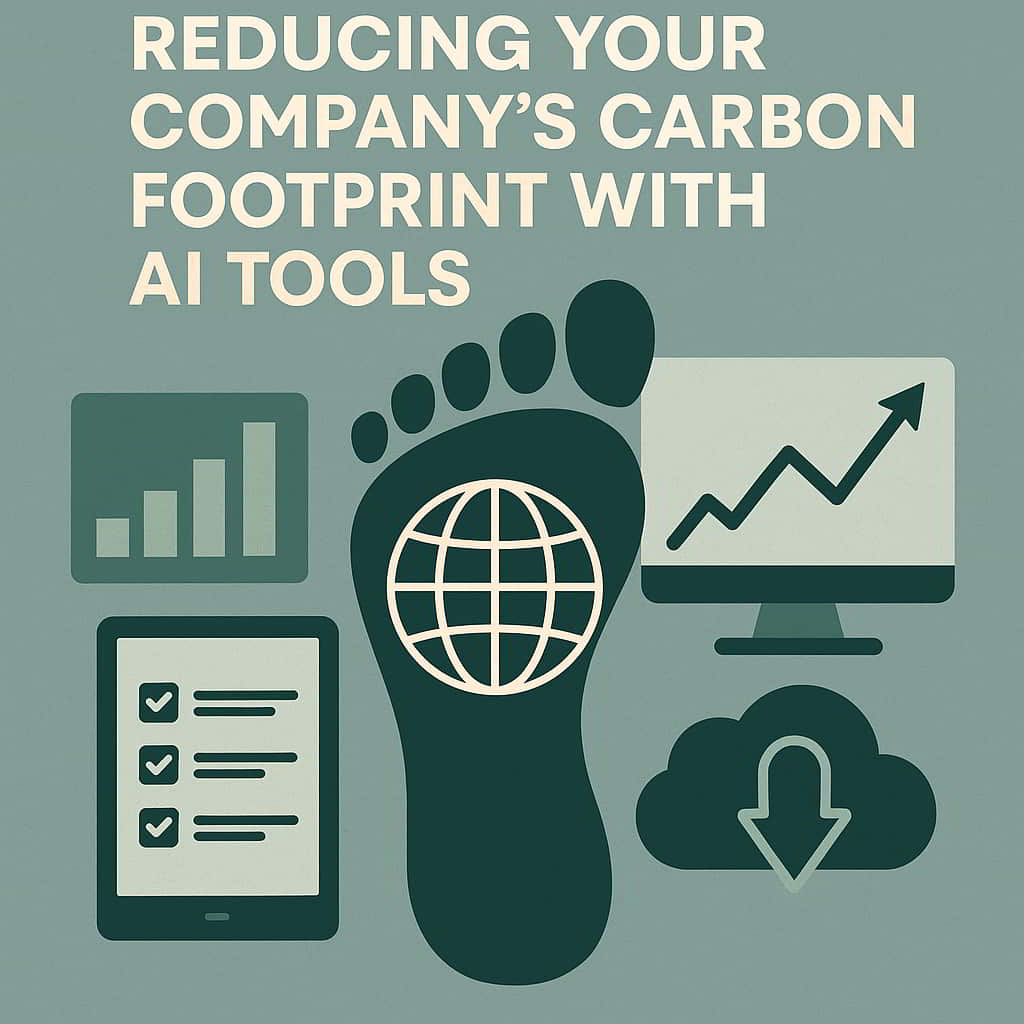Why Carbon Tracking Matters
For many organizations, sustainability goals are no longer optional – they are part of business performance. Investors, regulators, and customers now expect transparent reporting on environmental impact. Yet tracking and analyzing emissions across complex operations remains one of the most time-consuming tasks for corporate sustainability teams.
Artificial intelligence is changing that equation. By automating data collection, calculating emissions in real time, and generating predictive models, AI tools allow companies to understand their carbon footprint faster and more accurately than traditional spreadsheets or manual reporting systems. The result is better decision-making and measurable progress toward climate targets.
How AI Measures and Analyzes Emissions
AI-based carbon management platforms combine several technologies to create a clear emissions profile for a business.
1. Automated data aggregation
Machine learning models pull data from multiple sources – energy bills, IoT sensors, logistics systems, and procurement databases – to build a unified carbon inventory.
2. Classification and categorization
AI automatically classifies emissions into Scope 1, 2, and 3 categories, aligning with the Greenhouse Gas Protocol. This structure ensures that direct fuel use, purchased energy, and supply-chain emissions are measured consistently.
3. Predictive modeling
Once historical data is established, algorithms forecast future emissions based on variables such as production volume, transport routes, or weather conditions. These insights allow companies to set achievable reduction targets under frameworks like ISO 14064 or the EU Corporate Sustainability Reporting Directive (CSRD).
Leading AI Tools for Carbon Management
Watershed
Watershed focuses on enterprise-level carbon accounting and climate scenario planning. Its AI analyzes financial and operational data to calculate precise emissions values and automatically generates reports compatible with SEC and CSRD requirements.
Emitwise
Emitwise uses AI to track supply-chain emissions with granular visibility. The platform converts purchase orders and invoices into standardized carbon data, helping procurement teams evaluate vendors based on sustainability performance.
Persefoni
Persefoni’s AI engine provides real-time carbon dashboards that integrate directly with ERP and finance systems. The system benchmarks company emissions against industry averages and helps automate climate disclosures for investors.
Plan A
Based in Europe, Plan A offers predictive analytics for climate risk and decarbonization pathways. Its machine learning models help organizations simulate the effect of specific reduction initiatives before implementation.
Integrating AI into Reporting Workflows
The most efficient sustainability programs treat AI not as a separate system but as part of existing business operations. Integration with tools like Microsoft Sustainability Manager, SAP Cloud for Sustainable Enterprises, or Google Cloud Carbon Footprint enables automated data flow between departments.
AI-driven dashboards update carbon metrics continuously, replacing static quarterly reports with living sustainability indicators. This constant feedback loop helps executives monitor progress, adjust strategies, and meet goals outlined in the EU Green Deal and Science Based Targets initiative (SBTi).
Turning Insights into Action
Tracking emissions is only the first step; reduction requires action. AI can recommend specific interventions based on detected patterns – optimizing logistics routes, predicting energy demand, or suggesting low-impact materials in procurement. When combined with renewable energy forecasting, these tools also support load balancing and smarter grid participation.
Many organizations complement digital tracking with behavioral initiatives such as employee “carbon challenges” or internal sustainability hackathons. Embedding AI insights into company culture ensures that technology and people move together toward a shared goal.
Toward Data-Driven Sustainability
Artificial intelligence brings precision and speed to an area once dominated by estimates. Companies that adopt AI-based carbon monitoring not only improve reporting accuracy but also build resilience in an increasingly regulated market.
As global policies like the EU Circular Economy Action Plan and B Corp certification gain traction, transparent carbon accounting becomes a hallmark of responsible business. AI doesn’t replace human strategy – it provides the intelligence and automation needed to make sustainability measurable, credible, and scalable.
